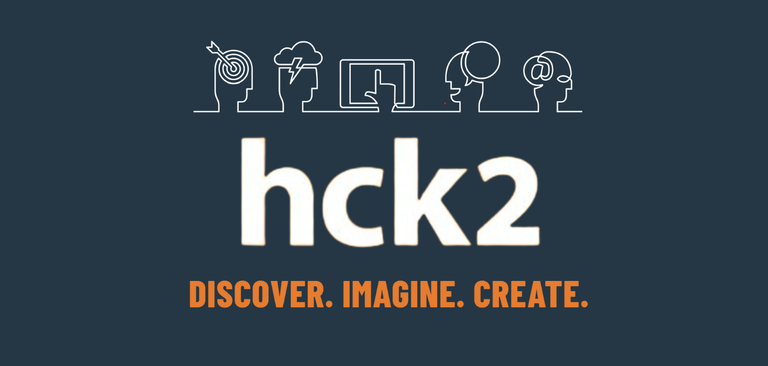
How To Create An Industry Dominating, Competitor Crushing Strategy
Want to know the secret to dominating your industry while crushing your competition and scaling your business up to a multi-billion dollar company?
Well, get in line because everyone else in your industry is looking for the secret formula too.
The truth is, there is no secret to becoming the next Southwest Airlines, Apple or Starbucks. But there are solid steps you can take to put you on the right path.
These steps include:
- scaling your business,
- strategic thinking,
- planning
- execution of a killer business plan.
Mark Fenner presented a 7-Step Strategic Framework (The 7 Strata) at CityCentral’s most recent Speaker Series event. This framework has helped thousands of organizations scale up to reach $100 million and beyond. He is President of Rise Performance Group, a Gazelles Scaling-Up Certified Coach, a John Maxwell Certified Leadership Trainer and a member of the National Speakers Association.
He founded Rise Performance Group in 2011 after a 25-year career as a sales leader in software and technology services. His passion is helping leaders become more, so they can achieve more, so they can ultimately give more.
The Framework he presented may not be a secret, but it can definitely work some magic for your business.
Growing Vs. Scaling
It’s an old adage in the business world, but it still rings true: If you’re not growing, you’re dying.
While growth is good – making a sale, adding another client, you are adding resources at the same rate you add revenue. Basically you’re treading water. Scaling your business is better.
Scaling means adding revenue at an exponential rate while only adding resources at an incremental rate. Think of it like this:
A software company spends tons of time and resources writing a killer piece of new software that will revolutionize the computing industry. But when they’re finished, it costs them little to mass produce the software and sell millions of products to the public. That’s scalability.
Without scaling your company not only are you just treading water – you’re a sitting duck to your competitors.
We’ll talk about strategies for scaling later, but first, let’s talk about some of the barriers to scaling.

Giving Up To Scale Up
There are three barriers to scaling your business:
- Leadership – The biggest barrier to scaling your business is leadership. Hiring the right people, training them and then trusting them to do their jobs.
“It’s difficult because you’re working so hard, building your company and you know everything about your business,” Mark said. “And you don’t want to let go because you don’t trust your employees to do it – but you’ve got to let go.”
Leadership is the reason Apple is one of the most valuable companies in the world and also why a company like Blockbuster which had 5.9 billion in annual revenue is now gone.
- Marketing and Public Relations (PR) – If you can’t sell your product and you can’t market it – it’s going to be really difficult for you to build a great company. You have to build a marketing and sales machine.
- Scalable Infrastructure – You have to build the infrastructure for growth. If you don’t have the ability to handle growth, you’ll have problems scaling. This is the reason having enough cash reserves on hand is so important.
Strategic Thinking
If implementing an industry dominating, competitor crushing strategy were easy, everyone would be doing it – but it’s not. You have to develop the discipline of thinking and then the discipline of committing to a plan.
It’s easy to get bogged down in the day to day grind of your business or to become blind to new ways of thinking because what you’ve been doing has been working fairly well for you. But the definition of insanity is repeating the same action again and again, expecting different results.
You have to step outside that rigid way of thinking and actually THINK strategically.
Strategic thinking cadence: Think → Plan → Act → Learn
- Think – Take time to step back, out of your normal operating mode and think about new ways of doing things. What do we need to change? Where do we need to pivot?
- Plan – Make new plans and then have the discipline to stick with it.
- Act – Make the leap to act on your plans, no matter how bold or risky.
- Learn – Learn lessons from your successes and more importantly, your failures.
Mastering Four Decisions:
- People – Getting the right people on the bus and the wrong people off. Then getting the right people doing the right things. If you tolerate C players, you’re going to get C players.
- Strategy – Can you state your firm’s strategy simply, and is it driving sustainable growth in revenue and gross margins?
Michael Porter of the Harvard Business Review – What is strategy?
- Strategy is the creation of a unique and valuable position involving a different set of activities
- Strategy requires you to make tradeoffs in competing – to choose what not to do
- Strategy involves creating the “Fit” among a company’s activities
- Execution – Prioritize what’s important, Measure what matters, Have the discipline to reflect on whether you’re going in the right direction
- Cash – DON’T RUN OUT. You can have lousy people, lousy strategy, lousy execution and you can limp along but you can’t survive a day without cash.
The 7 Strata of Strategy
The 7 Strata of Strategy is a method created by Verne Harnish for developing an industry dominating strategy. Without an effective strategy, you’re going to waste a lot of time, money and resources.
So what is an effective strategy?
- It can be stated simply – If you can’t state your strategy simply, then it will be really difficult for you to express it. This means your potential customers and your team will have a hard time understanding it.
- It has a clear differentiation – If you’re doing the same thing everyone else is doing, then you’re not different. That sounds like an obvious statement, but it highlights an important point many companies overlook: You can’t just say you are different. You must be different.
- It is repeated throughout everything you do

The 7 Strata
1. Words You Own – words that describe your company, they must stick – have to be authentic and should connect you with your target market. For example:
- IKEA: Flat-packed
- Southwest Airlines: Wheels Up
2. Brand Promises – Offer a unique brand promise and be so good at it, customer’s will not care if you’re bad at everything else. Declare 3 brand promises.
- Catapult Systems: “We always deliver, We’re easy to work with, We bring the whole team”
- FastCat Ferry Service: “FerrySafe, FerryFast, FerryConvenient”
3. Brand Promise Guarantee – This is something that makes it hard to break your promise.
- Domino’s Pizza – “30 minutes or it’s free”
4. One-phrase Strategy – Once you’ve established your three brand promises, your next step is to sub-brand them with a one-phrase strategy. It should be simple and easy to communicate.
5. 3-5 Differentiating Activities – How do you differentiate yourself? The answer lies in your activities. You have to make tradeoffs in your business model, who your core customer is – you can’t serve everyone.
- Southwest Airlines’ Differentiating Activities:
- Same aircraft for all their flights
- Small airports
- No advanced reservation seating
- No food, only peanuts
- Only 1 class of service (no 1st class)
6. Establish Your X-Factor – It’s not just about getting ahead of your competition but staying ahead too. The X Factor is what gives you an underlying advantage of 10 to 100 times that of your competition.
- Benefits
- Solves industry bottleneck
- 10x competitive advantage
- Revolutionizes the marketplace
- Discovering your X-Factor
- What is the one thing I hate most about my industry?
- What is driving me nuts?
- What is the choice point constraining the company?
- What is no one else doing?
7. Measure Your Profit per X and BHAG
- What’s your industry’s standard benchmark
- What products and services drive your top line
- What cost drivers are critical to profit that you can control
- What “units (X’s)” would you want more versus less of
- What “units (X’s)” can you optimize and competitors aren’t focused on
For Example: Southwest Airlines measured their profit not by profit per seat, profit per passenger, or profit per mile like other airlines. They measured profit per plane, which is in line with their approach of “Wheels Up”.
BHAG – Your BIG, HAIRY, AUDACIOUS GOAL
- What’s your purpose/passion?
- What are you best in the world at?
- Your profit per X?
- Where do you want to be in 10-30 years?
- Challenges you to greatness
- Reenforces business fundamentals
There’s no secret formula for success. If there was, everyone would be a Bill Gates, Warren Buffet or Richard Branson and you’d already be worth $15 billion and sipping champagne on a yacht.
Success doesn’t come easy, but if you follow the 7 Strata of Strategy, you’ll be one step closer to dominating your industry and crushing your competition.
Extras
3 Quick Things To Remember:
- It’s more important to be unique than it is to be better.
- Sacrifice is the essence of strategy. Focus on what you’re good at and let the rest go.
- Design all your systems to support your key to making money.
Books to read:
- “Scaling Up” by Verne Harnish
- “The New Rules of Marketing and PR” by David Meerman Scott
- “The Inside Advantage” by Robert H. Bloom
- “Uncommon Service” by Frances Frei and Anne Morriss
- “Good To Great” by Jim Collins
Don’t miss another event, follow us on Facebook, Instagram, and LinkedIn.


